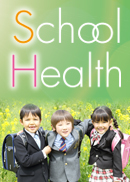Background: Although many health-risk behaviors among adolescents have improved in the past several decades, the coronavirus disease 2019 (COVID-19) pandemic might have a significant impact on adolescent health and health-risk behaviors.
Objective: This study aimed to explore trends in the prevalence of health-risk behaviors among Japanese adolescents between 2002 and 2021 and to assess whether the COVID-19 pandemic period is associated with those changes.
Methods: A repeated cross-sectional study was conducted using data from prefecture-wide surveys of public high schools in Okinawa Prefecture, Japan, in 2002, 2005, 2008, 2012, 2016, and 2021. The study included 16,562 students in grades 10 to 12 (15-18 years). The behaviors studied included injury-related behaviors, cigarette use, alcohol use, sexual behaviors, dietary behaviors, and physical activity. Logistic regression models were performed separately for boys and girls, treating the survey year as a continuous independent variable and adjusting for grade, school type and region.
Results: During the 20-year period, there were significant improvements in multiple health-risk behaviors, such as traffic risk behaviors, cigarette and alcohol use, vegetable intake, TV watching, and sexual behaviors. On the other hand, persistent sad feelings, suicidal ideation and fasting in girls, fruit consumption and physical activity in boys, and video game/computer use among both sexes have worsened over time. In particular, during the COVID-19 pandemic, physical activity and video game/ computer use in both sexes and persistent sad feelings and suicidal ideation in girls worsened significantly.
Conclusion: Many health-risk behaviors among adolescents improved between 2002 and 2021. Meanwhile, the COVID-19 pandemic might contribute to deteriorated physical activity and video game/ computer use and worsened mental health and suicidality among girls.
View full abstract
